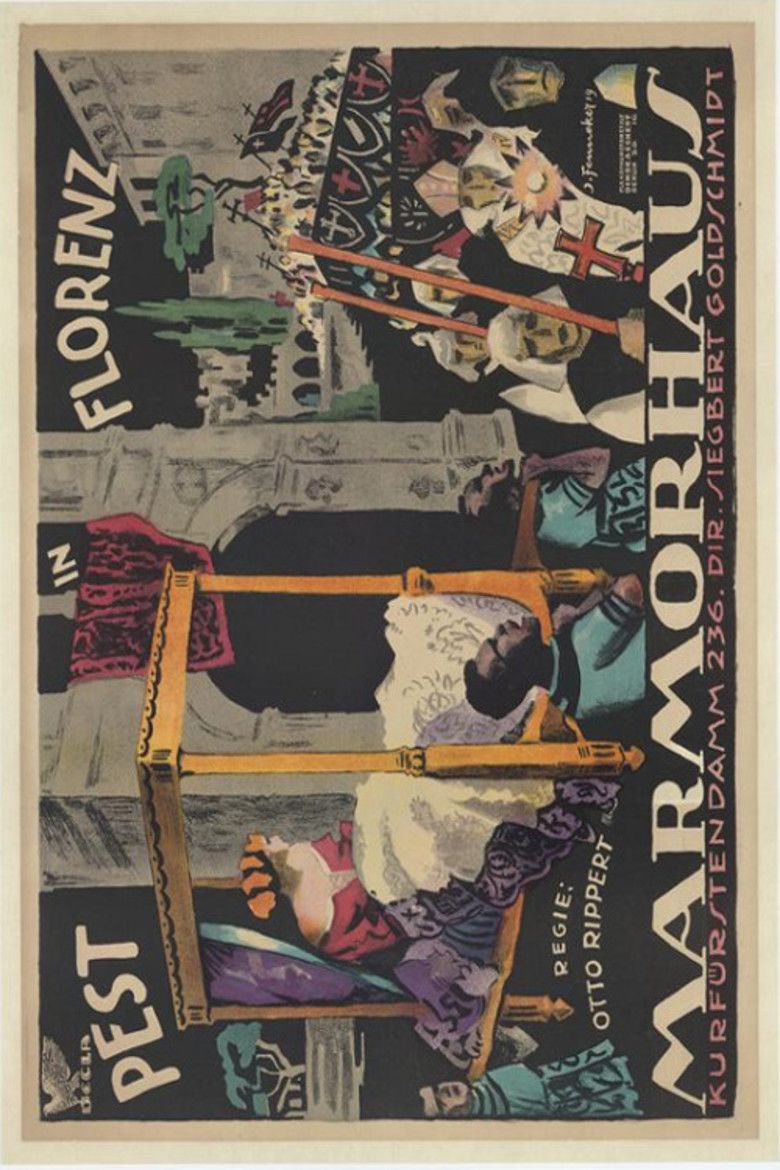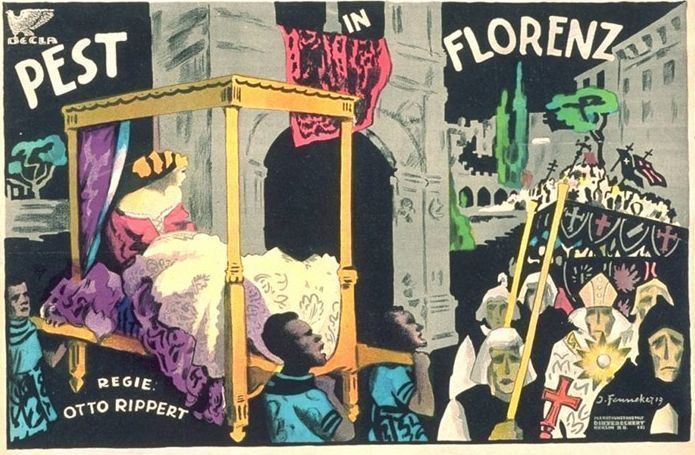The Plague of Florence
6 /10 1 Votes6
Duration Country Germany | 6.1/10 IMDb Genre Horror | |||||||||||||||||||||||||||||||||
 | ||||||||||||||||||||||||||||||||||
Language SilentGerman intertitles Release date 23 October 1919 Initial release October 23, 1919 (Germany) Cast Marga von Kierska (Julia), Anders Wikman (Lorenzo), (Medardus), Otto Mannstaedt (Cesare), Karl Bernhard (Lorenzo's Confidant), Hans Walter (Julia's Confidant)Similar movies Fritz Lang wrote the screenplay for The Plague of Florence and directed The Spiders | ||||||||||||||||||||||||||||||||||
The Plague of Florence (German:Pest in Florenz) is a 1919 German silent historical film directed by Otto Rippert for Eric Pommer's Deutsche Eclair (Decla) production company. It stars Marga Kierska, Theodor Becker, Karl Bernhard and Julietta Brandt. The film is set in Florence in 1348, just before the first outbreaks in Italy of the Black Death, which then spread out across the entire continent.
Contents

Cast
Plot outline
Julia, a rich courtesan (Marga von Kierska), arrives in Florence. A cardinal fears that her beauty could rival the church's power, and orders inquiries to be made about her Christian beliefs. Cesare, the city's ruler, and Lorenzo (his son) both fall madly in love with her. A mob, led by Lorenzo, storms the palace where Julia is about to be tortured. Lorenzo kills Cesare, his father, and rescues her. Lust and excess overtake the city. Even Medardus, a hermit, is overcome by her beauty, and he also is driven to commit sacrilegious acts. Florence's fine buildings are turned into dens of sexual debauchery. Excess and manslaughter continue uninterrupted until the arrival of a ragged female figure personifying the Plague, who infects the whole city with her deadly disease and plays the fiddle while the population dies in droves.
Production
The production company was Eric Pommer's Decla Film-Gesellschaft, the German branch of the French Éclair company (hence Deutsche Éclair). It didn't become Decla-Bioskop until 1920, after merging with Deutsche Bioskop. The latter company was originally formed by Jules Greenbaum in 1899, sold to Carl Moritz Schleussner in 1908, and moved to the Babelsberg studios in 1911.
The imposing, crowd-filled, exterior sets of mediaeval Florentine architecture including the Medici Palace were designed by the architect Franz Jaffe (1855-1937), previously royal buildings advisor to the King of Prussia. Some of the more intimate interior scenes were filmed at 9 Franz Josef-Straße, Weissensee, Berlin, a glasshouse studio built in 1914 for the Continental-Kunstfilm production company.
The cameramen Willy Hameister and Emil Schünemann had previously filmed Continental's In Nacht und Eis, the first feature film about the sinking of the RMS Titanic: one of the stars in that film was Otto Rippert, who then went on to direct some further ten films for Continental in 1912 and 1913. See also List of films made by Continental-Kunstfilm.
Performances
The film received its première at the de:Marmorhaus Theatre, Berlin, but the music specially composed by Bruno Gellert wasn't finished in time, and wasn't played until several days later.
References
The Plague of Florence WikipediaThe Plague of Florence IMDbThe Plague of Florence themoviedb.org
